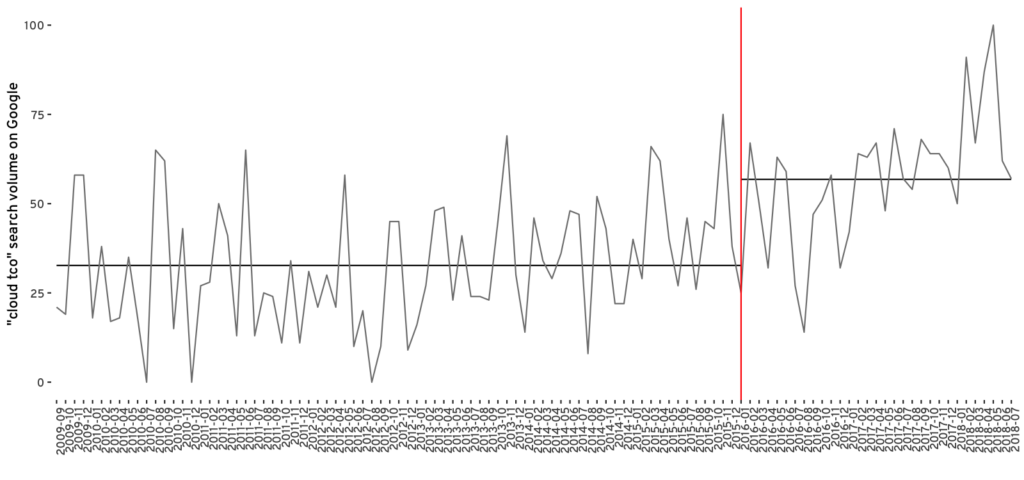A couple of years ago, Massimo Ferrari and I created the most extensive and thorough financial evaluation of OpenStack, which we called Elephant in the Room. We talked about it a lot, met a lot of customers doing amazing things, and received a lot of nice press coverage. Pulling together this type of research is a lot of work, and the hope was it would do more than help a few customers. The hope was it would help change the conversation we, as an industry, are having around cloud. That’s ambitious, I know, but I’m an optimist and was convinced we needed more understanding of financial implications of our technology choices.
Using some quick R¹ for statistical testing on the results of search phrase “cloud tco” on Google Trends, there is a sustained 42% increase in that search phrase following our blog post. I don’t know whether our blog post and talks around the world caused it, but the stats are significant (p << 0.01), and it sure is a heck of a coincidence.
¹ Code and data here: https://github.com/emorisse/ARIMAelephant
